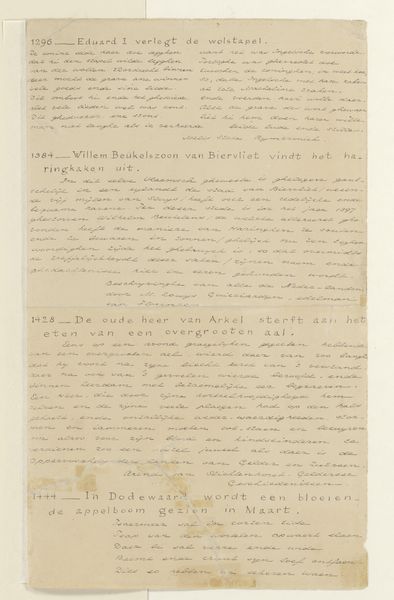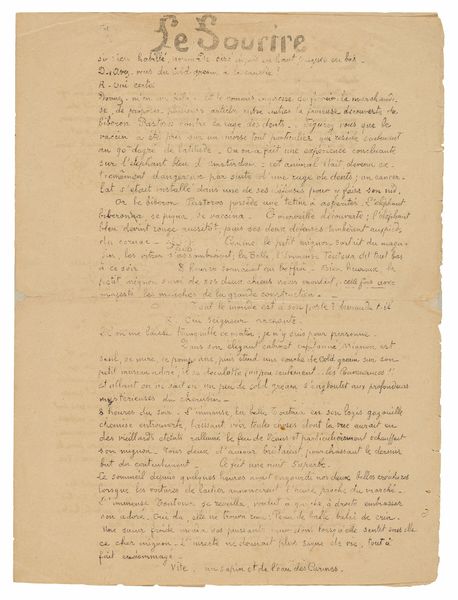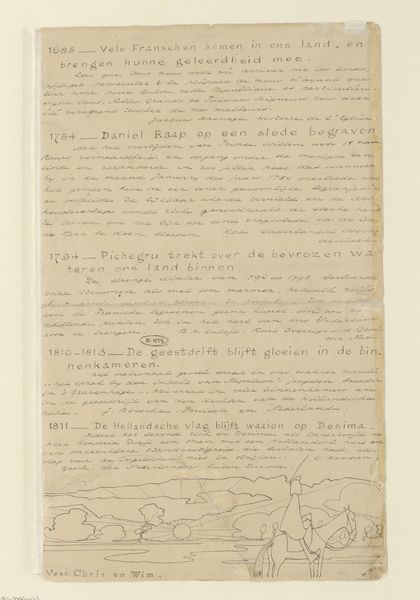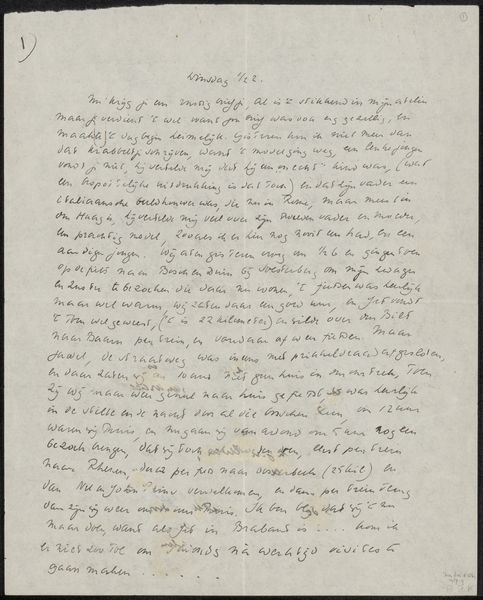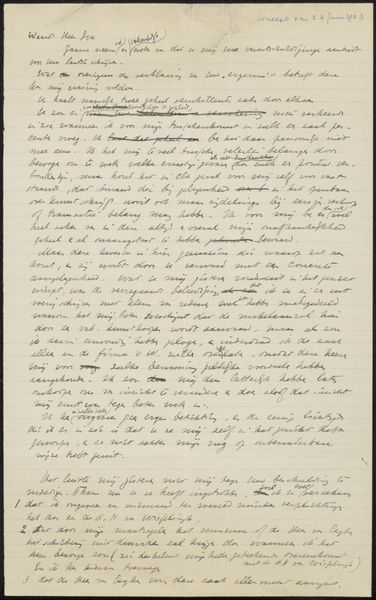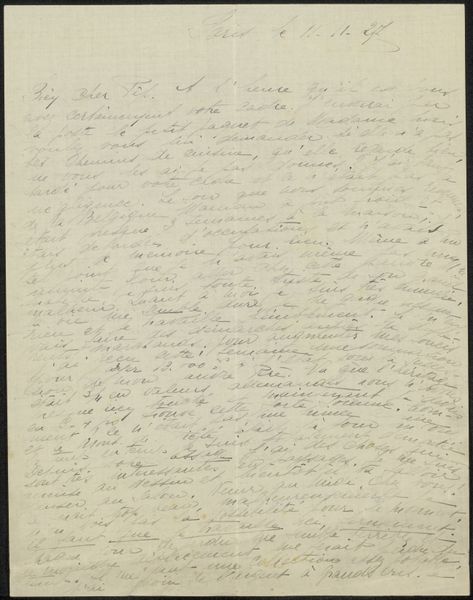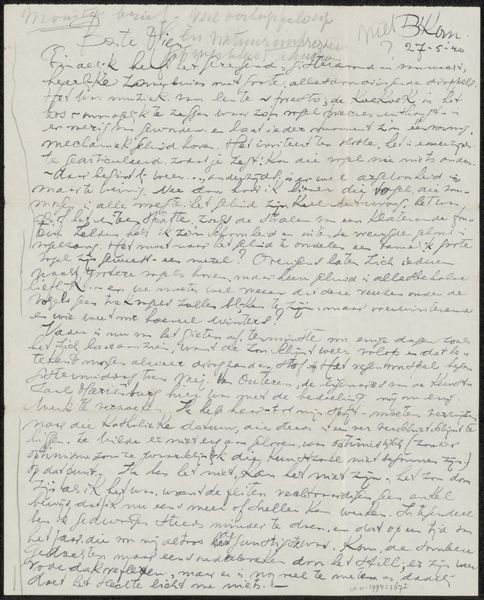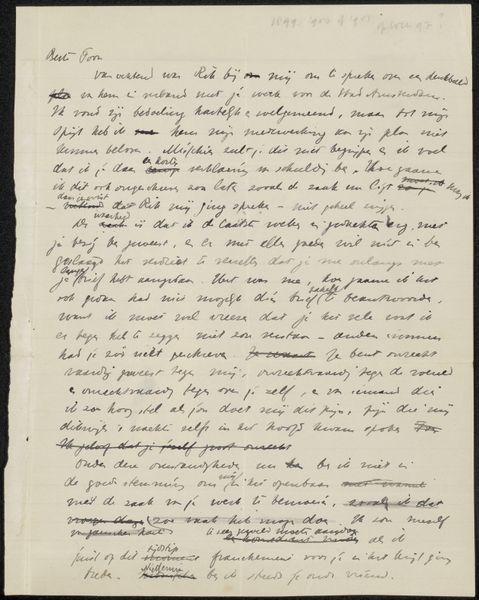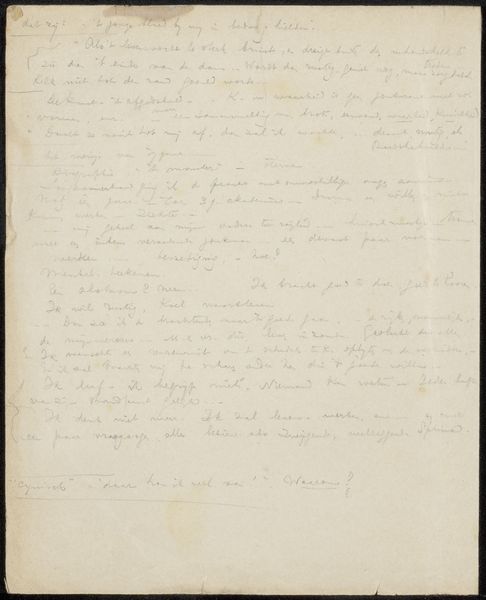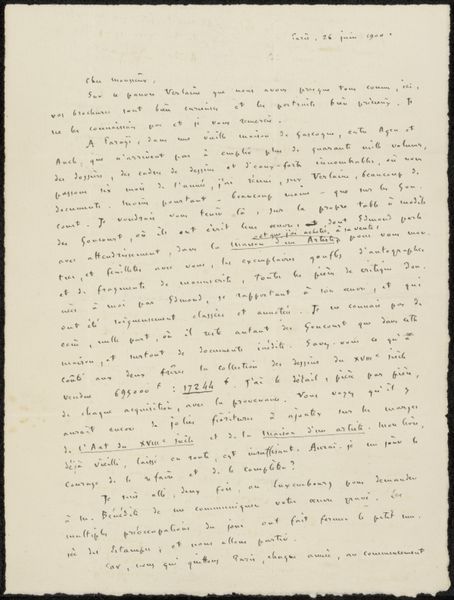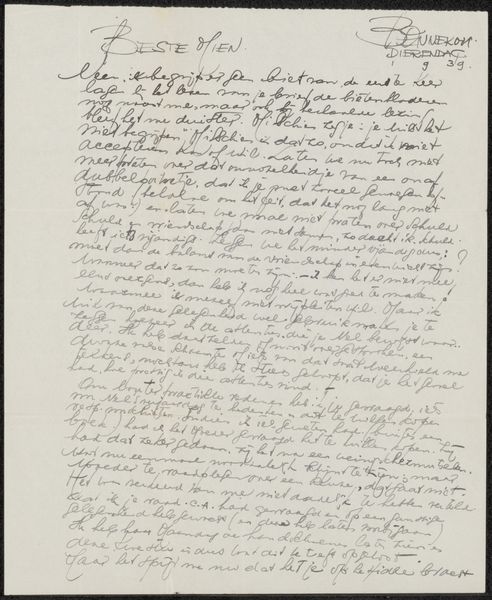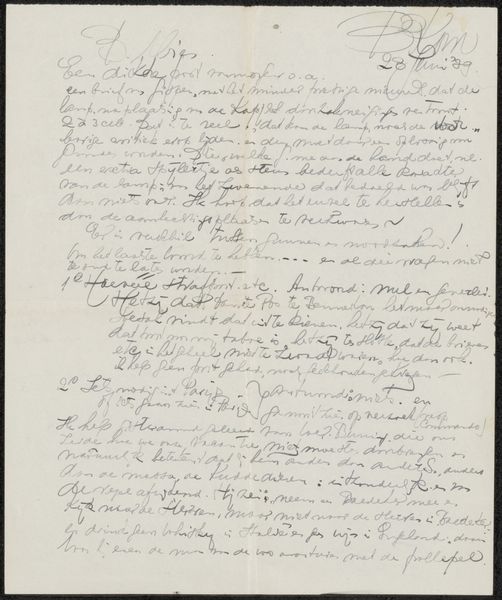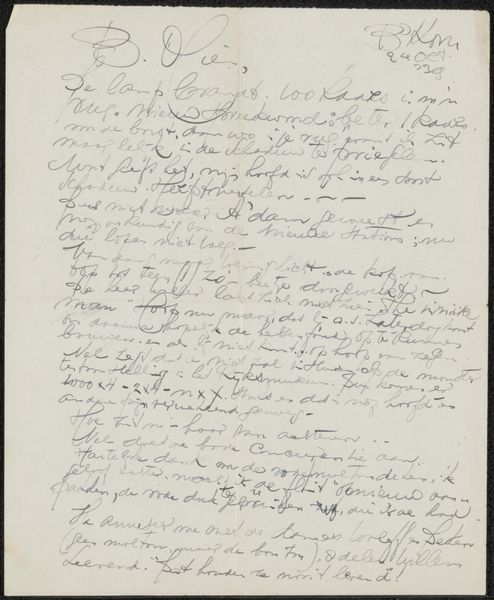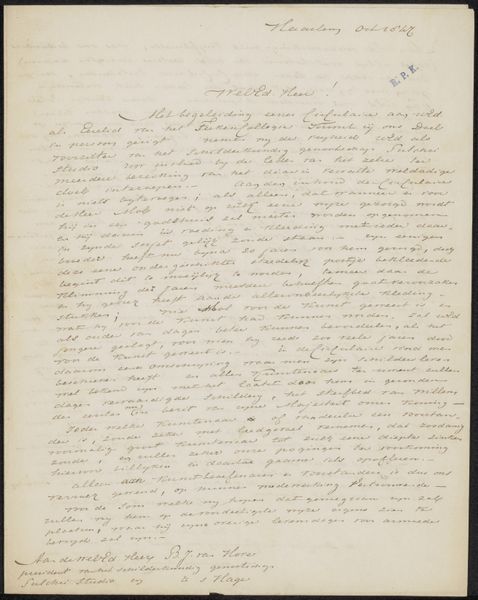
Blad met handgeschreven beschrijvingen van scènes uit 'Keur van gedenkwaardige tafereelen uit de vaderlandsche historiën' 1893 - 1895
0:00
0:00
drawing, paper, ink
#
drawing
#
narrative-art
#
paper
#
ink
#
modernism
Dimensions: height 343 mm, width 217 mm
Copyright: Rijks Museum: Open Domain
Curator: What strikes me first about this page, "Blad met handgeschreven beschrijvingen van scènes uit 'Keur van gedenkwaardige tafereelen uit de vaderlandsche historiën,'" dating from between 1893 and 1895, is the sheer intimacy of it. It feels like peeking into a personal notebook. Editor: It does have a certain… literary vibe, doesn’t it? Like catching a glimpse of someone's process. But, setting aside its aesthetic qualities, let’s consider its physical properties. Look at the paper's aging, the consistent hand of the writer, the very deliberate application of ink. It’s all carefully chosen material. Curator: Absolutely, the medium underscores the message. It presents these "memorable scenes from national history" with…a very personal lens. You could even argue the choice of a simple, handwritten sheet subverts any grandiose narratives, rendering history immediate. What historical narratives were deemed "worthy" by an individual here? Editor: Exactly! And further, we need to ask who this "individual" was. In the context of late 19th-century historical consciousness, this artifact represents a crucial intersection. This act of handwriting transforms historical "facts" into craft, labouring over what the author saw, what stories they want to represent. Curator: Precisely. Looking at phrases like "Philips de Schoone neemt een koelen dronk en sterft", it's hard not to feel the brevity of life and the choices, consciously or unconsciously, of what gets immortalized. It makes you wonder about the writer’s mood and mental state. Was the selection driven by politics, a moral agenda, or mere fascination? Editor: I think it could be all of that—there aren't just written words, there's thought, reflection, and purpose that shapes and guides its creation. Curator: Well, beyond any concrete answers, I love how this humble sheet provokes questions about historical memory. Editor: I agree. This invites reflection on how materials, labour, and intimate creation can frame historical accounts and our modern understanding of those long stories.
Comments
No comments
Be the first to comment and join the conversation on the ultimate creative platform.
